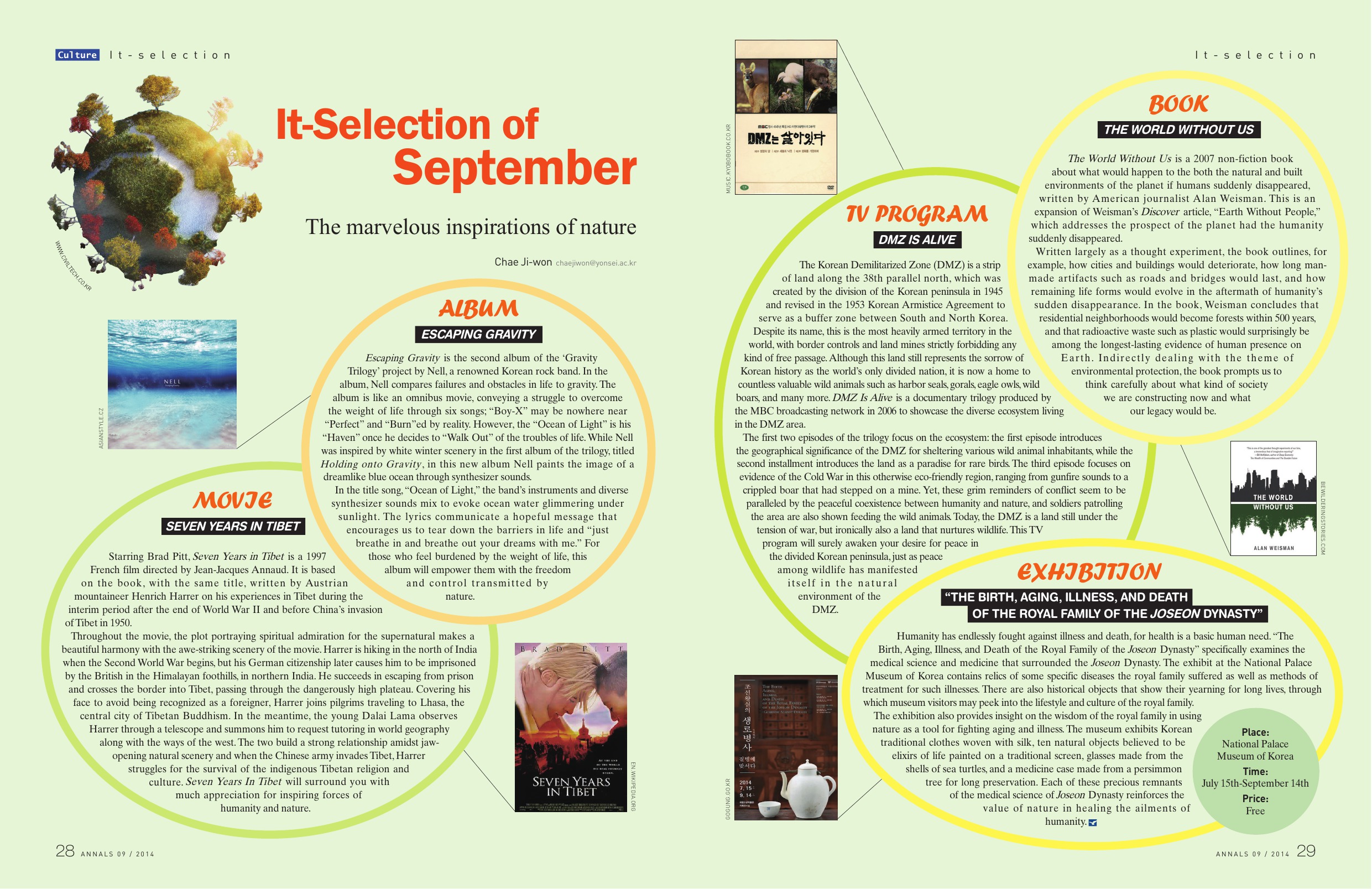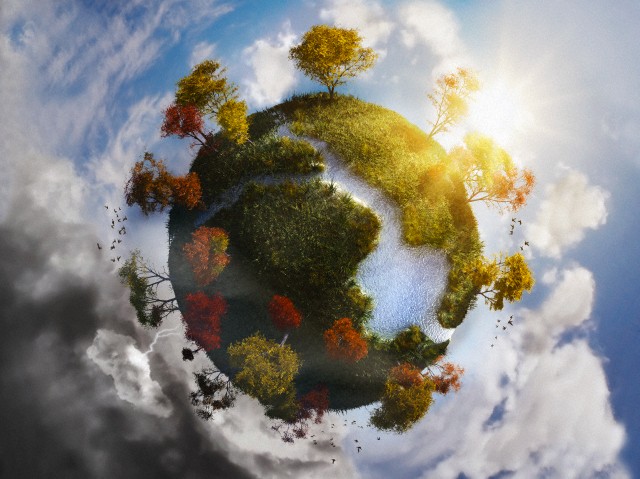The marvelous inspirations of nature


Album-Escaping Gravity
Escaping Gravity is the second album of the ‘Gravity Trilogy’ project by Nell, a renowned Korean rock band. In the album, Nell compares failures and obstacles in life to gravity. The album is like an omnibus movie, conveying a struggle to overcome the weight of life through six songs; “Boy-X” may be nowhere near “Perfect” and “Burn”ed by reality. However, the “Ocean of Light” is his “Haven” once he decides to “Walk Out” of the troubles of life. While Nell was inspired by white winter scenery in the first album of the trilogy, titled Holding onto Gravity, in this new album Nell paints the image of a dreamlike blue ocean through synthesizer sounds.
In the title song, “Ocean of Light,” the band’s instruments and diverse synthesizer sounds mix to evoke ocean water glimmering under sunlight. The lyrics communicate a hopeful message that encourages us to tear down the barriers in life and “just breathe in and breathe out your dreams with me.” For those who feel burdened by the weight of life, this album will empower them with the freedom and control transmitted by nature.
Movie-Seven Years in Tibet
Starring Brad Pitt, Seven Years in Tibet is a 1997 French film directed by Jean-Jacques Annaud. It is based on the book, with the same title, written by Austrian mountaineer Henrich Harrer on his experiences in Tibet during the interim period after the end of World War II and before China’s invasion of Tibet in 1950.
Throughout the movie, the plot portraying spiritual admiration for the supernatural makes a beautiful harmony with the awe-striking scenery of the movie. Harrer is hiking in the north of India when the Second World War begins, but his German citizenship later causes him to be imprisoned by the British in the Himalayan foothills, in northern India. He succeeds in escaping from prison and crosses the border into Tibet, passing through the dangerously high plateau. Covering his face to avoid being recognized as a foreigner, Harrer joins pilgrims traveling to Lhasa, the central city of Tibetan Buddhism. In the meantime, the young Dalai Lama observes Harrer through a telescope and summons him to request tutoring in world geography along with the ways of the west. The two build a strong relationship amidst jaw-opening natural scenery and when the Chinese army invades Tibet, Harrer struggles for the survival of the indigenous Tibetan religion and culture. Seven Years in Tibet will surround you with much appreciation for inspiring forces of humanity and nature.
TV Program-DMZ Is Alive
The Korean Demilitarized Zone (DMZ) is a strip of land along the 38th parallel north, which was created by the division of the Korean peninsula in 1945 and revised in the 1953 Korean Armistice Agreement to serve as a buffer zone between South and North Korea. Despite its name, this is the most heavily armed territory in the world, with border controls and land mines strictly forbidding any kind of free passage. Although this land still represents the sorrow of Korean history as the world’s only divided nation, it is now a home to countless valuable wild animals such as harbor seals, gorals, eagle owls, wild boars, and many more. DMZ Is Alive is a documentary trilogy produced by the MBC broadcasting network in 2006 to showcase the diverse ecosystem living in the DMZ area.
The first two episodes of the trilogy focus on the ecosystem: the first episode introduces the geographical significance of the DMZ for sheltering various wild animal inhabitants, while the second installment introduces the land as a paradise for rare birds. The third episode focuses on evidence of the Cold War in this otherwise eco-friendly region, ranging from gunfire sounds to a crippled boar that had stepped on a mine. Yet, these grim reminders of conflict seem to be paralleled by the peaceful coexistence between humanity and nature, and soldiers patrolling the area are also shown feeding the wild animals. Today, the DMZ is a land still under the tension of war, but ironically also a land that nurtures wildlife. This TV program will surely awaken your desire for peace in the divided Korean peninsula, just as peace among wildlife has manifested itself in the natural environment of the DMZ.
Book-The World Without Us
The World Without Us is a 2007 non-fiction book about what would happen to the both the natural and built environments of the planet if humans suddenly disappeared, written by American journalist Alan Weisman. This is an expansion of Weisman’s Discover article, “Earth Without People,” which addresses the prospect of the planet had the humanity suddenly disappeared.
Written largely as a thought experiment, the book outlines, for example, how cities and buildings would deteriorate, how long man-made artifacts such as roads and bridges would last, and how remaining life forms would evolve in the aftermath of humanity’s sudden disappearance. In the book, Weisman concludes that residential neighborhoods would become forests within 500 years, and that radioactive waste such as plastic would surprisingly be among the longest-lasting evidence of human presence on Earth. Indirectly dealing with the theme of environmental protection, the book prompts us to think carefully about what kind of society we are constructing now and what our legacy would be.
Exhibition-“The Birth, Aging, Illness, and Death of the Royal Family of the Joseon Dynasty”
Humanity has endlessly fought against illness and death, for health is a basic human need. “The Birth, Aging, Illness, and Death of the Royal Family of the Joseon Dynasty” specifically examines the medical science and medicine that surrounded the Joseon Dynasty. The exhibit at the National Palace Museum of Korea contains relics of some specific diseases the royal family suffered as well as methods of treatment for such illnesses. There are also historical objects that show their yearning for long lives, through which museum visitors may peek into the lifestyle and culture of the royal family.
The exhibition also provides insight on the wisdom of the royal family in using nature as a tool for fighting aging and illness. The museum exhibits Korean traditional clothes woven with silk, ten natural objects believed to be elixirs of life painted on a traditional screen, glasses made from the shells of sea turtles, and a medicine case made from a persimmon tree for long preservation. Each of these precious remnants of the medical science of Joseon Dynasty reinforces the value of nature in healing the ailments of humanity.
Place: National Palace Museum of Korea
Time: July 15th-September 14th
Price: Free

